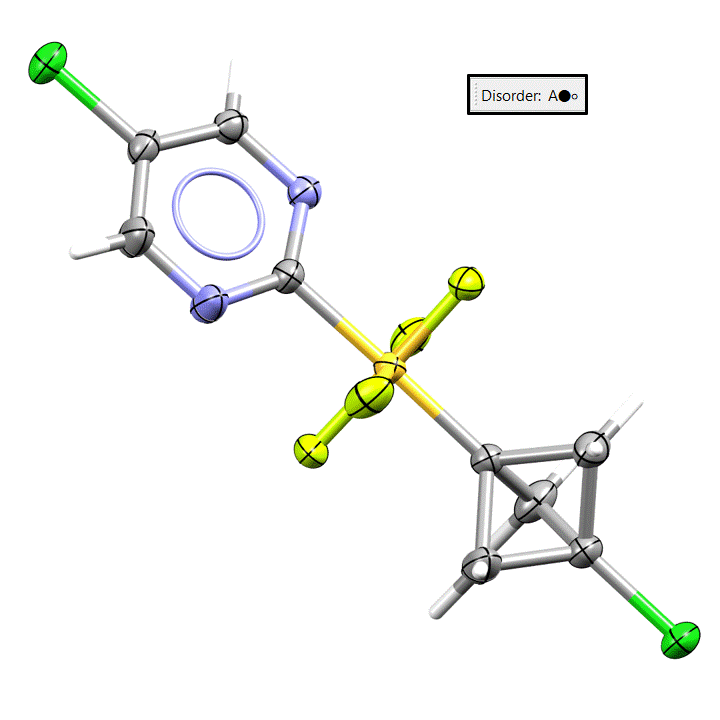Introducing Cambridge Structural Database 6.00
The latest version of Cambridge Structural Database (CSD) has been released. CSD 6.00 is a significant milestone for the database, as a new data format enables a range of new features and improvements, including disorder handling, alongside the latest data additions.
“I’m really pleased to see the 2025.1 release of the CSD Portfolio go live. It includes one of our biggest data releases yet and introduces powerful new ways for researchers to explore and analyse disorder models and new data fields through Mercury and the CSD Python API. This is a significant step forward in our mission to support discovery through curated, trusted data—and I’m excited to see what our community does with it,” Suzanna Ward, Head of Data and Community, CCDC.
Data, Disorder, and Data Fields
This data update brings the CSD to 1,371,757 entries (1,336,680 structures; 45% organic and 55% metal-organic). Here are some highlights of the new data included in this update.
Considering organic only molecules, we can share a new polymorph of fenofibric acid, a treatment for high levels of fat or cholesterol (🔎 Varsa S et al., Crystal Growth and Design; Solid-State Diversity of Fenofibric Acid: Synthon Polymorphs and Salts with Altered Solubility and Dissolution). Reported 20 years after the first polymorph, the new structure was shown to have better dissolution compared to the original at neutral pH.

The new polymorph of fenofibric acid also features in the CSD Drug subset, a pre-defined hitlist of over 16K entries to narrow down the CSD for users interested in pharmaceutical structures. In addition to the previously available subsets, including pesticide, hydrate, and high-pressure structures, we have added four new collections of related entries. In this release, you can now explore entries generally recognised as safe (GRAS), having raw data, having been retracted, and structures that have semiconductor properties. An example from the GRAS subset is the co-crystal of caffeine and citric acid.

Building on previous work in the group, Ragan et al. have further investigated the bicyclopentane molecule of the Refcode family IFEVIC (Journal of the American Chemical Society; https://doi.org/10.1021/jacs.4c08867 ). This study has added 13 new instances of the structure, uncovering a new polymorph, for investigating the fact that these crystals are extremely mechanically responsive on cooling to very low temperatures.

The bicyclophane group of this molecule suffers from rotational disorder in the P21/n polymorph that becomes less pronounced with cooling. This structure offers an opportunity to update on disorder in the CSD. In 2024, we released a version of Mercury that displayed disorder assembly groups when loading in CIFs. Within this release, this functionality has been applied to entries already in the CSD with over 165K structures benefiting from having assembly groups instead of suppressed atoms. The two configurations of the bicyclophane group in IFEVIC08 are shown below. For further information on the latest representation of disorder in the CSD and our plans, see Bringing Order to Disorder: Expanding Structural Detail in the CSD.

For metal containing entries, a notable addition to the CSD is a new berkelium complex (Science; Berkelium–carbon bonding in a tetravalent berkelocene ). Prepared by Russo et al., from 0.3 milligrams of berkelium-249, the structure is an organometallic sandwich complex featuring Bk4+ and represents only the eighth unique example of berkelium in the CSD.

New examples of functional metal-organic frameworks are also included in this release. Yang et al. have reported a series of mixed-metal benzoquinone-bridged complexes in Crystal Growth & Design (Linking Cyanometallate [Fe2Co2] Squares into One-Dimensional Chains via Benzoquinones). These complexes were shown to have a ferromagnetic interaction between the iron and cobalt ions and an antiferromagnetic interaction between the cobalt ions separated by the benzoquinone ligand.

Entries within this release have been further enriched with extra information. For the majority of structures ( > 1 million structures), additional data integrity fields have been extracted from the CIF file. For metal-organic frameworks, properties related to area, pore structure, and dimensionality have been calculated for 135K entries. Literature references have also been improved to include the paper title, and this information is currently available for over 270K entries. These new fields are now viewable in Mercury and searchable in the Python API and offer a new way to interact and filter structures in the CSD. See below for the output of this new information in Mercury for the magnetic MOF JURRIB. Read more about our new data fields in Enriching the CSD: New Data Fields for Deeper Structural Insights. What insights will you find with this new data?
Next Steps
To discuss further and/or request a demo with one of our scientists please contact us via this form or .
Check out the Cambridge Structural Database (CSD) for yourself and see how your research can benefit from the combined knowledge of over 1.3M small-molecule organic and metal-organic crystal structure data.
Proprietary data? Our team can curate your proprietary data into a Cambridge Structural Database (CSD)-like database, accessible through a simple browser-based interface. This is all done within your firewall to comply with your data security requirements.
More information on CSD software trusted by academic and industrial institutions around the world.
See case studies of the CSD in action, driving forward the boundaries of scientific research.